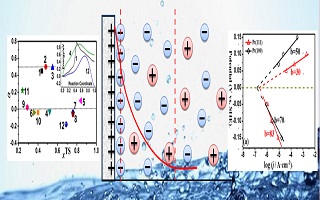

固液界面双电层的理论计算模拟
收稿日期: 2019-01-07
修回日期: 2019-01-29
网络出版日期: 2020-04-16
基金资助
国家自然科学基金项目(21573149);国家自然科学基金项目(21533001);国家自然科学基金项目(91745201)
Insight into the Important Solid/Liquid Double Layer from First-Principles Calculations
Received date: 2019-01-07
Revised date: 2019-01-29
Online published: 2020-04-16
固液界面双电层在电化学中处于核心地位. 如何发展一个理论方法,在该方法的框架下计算双电层的平衡性质和动力学性质一直以来都是理论研究的难点和热点. 本文总结了最近十几年第一性原理计算方法在计算双电层平衡性质和电催化反应的进展,如热力学方法、反应中心模型以及双参考方法. 并进一步详细地阐述了基于周期性均匀介质溶剂化模型 ( DFT/CM-MPB)对于固液界面双电层的研究,该方法能够计算双电层的平衡性质(零电荷电势和微分电容)和表面相图,在此基础上能深入研究基元反应的电荷转移系数,并结合微观动力学推导出宏观的Tafel(电流-电势)曲线. 并列举了该方法对于重要电化学反应(如氢电极反应)的应用实例.

方亚辉 , 刘智攀 . 固液界面双电层的理论计算模拟[J]. 电化学, 2020 , 26(1) : 32 -40 . DOI: 10.13208/j.electrochem.181243
Solid/liquid double layer is of fundamental importance in electrochemistry. It has been a challenge and focus to understand the equilibrium and the dynamic phenomena (e.g., chemical reactions) at the electrode/electrolyte double layer in a unified theoretical framework. In recent years, rapid expansion and development have been done in the application of first principles density function theory (DFT) simulation on the double layer. This article reviews the current theoretical methods for electrochemistry modeling, such as reaction center model, thermodynamic method and double reference model. The progress in the computation procedures based on first principles periodic continuum solvation method (DFT/CM-MPB) for obtaining the differential capacitance, surface phase, charge transfer coefficient (CTC) and deducing the potential-dependent reaction rate are summarized in detail. Representative reactions, namely, hydrogen evolution reactions, are selected to illustrate how the theoretical methods are applied to compute quantitatively the kinetics of multiple-step electrochemical reactions.

/
| 〈 |
|
〉 |